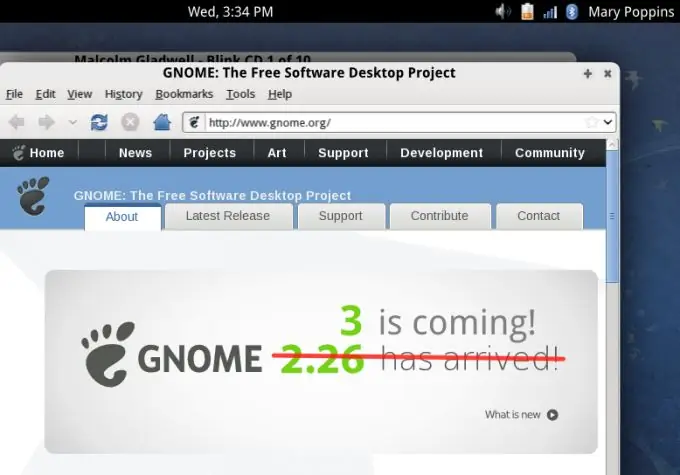Every six months, Canonical developers release a new version of the Ubuntu operating system, the progenitor of which is Linux. Before the release of 11.10, the development team promised that this version would include the latest version of the Gnome shell, but the miracle never happened. It turns out that the shell itself is there, but Unity was installed by default instead.

Necessary
- - distribution kit of the operating system Ubuntu 11.10;
- - Terminal software.
Instructions
Step 1
It is worth noting that 3 versions of the shells were included in the new assembly, such an innovation has never happened before. True, they are not displayed by default, i.e. they need to be activated by slightly adjusting the system for yourself. After completing the configuration, you will actually get 3 shells: Unity, Gnome and Gnome Shell. Each is individual and in each you can perform any operation.
Step 2
Before installing additional skins, it is recommended to update the software to the latest versions, for this use the "Update Manager", which can be found in the "System" menu ("Administration").
Step 3
Now start the "Terminal" program (similar to the command line in Windows). In Unity, a lot of familiar elements have disappeared, so for a quick start, use the keyboard shortcut Ctrl + alt="Image" + T. In a terminal window, enter the following line sudo apt-get install gnome-shell and press Enter. If you are too lazy to enter such a long line, copy it using the Ctrl + C or Ctrl + Insert keys and paste it in the terminal via the Edit (Paste) menu or by using the Ctrl + Shift + V key combination.
Step 4
A message will appear on the terminal screen asking you to enter the superuser password (analogous to the administrator in Windows). Enter it and press Enter again. During the installation of the selected package, messages will appear in the terminal window notifying that additional packages are being downloaded. Answer the incoming questions positively by entering the symbol Y or D (depending on the localization of the system).
Step 5
After installing the shell, enter the command exit and press Enter (exit the terminal). Now click on the gear icon in the upper right corner of the desktop, select "End Session" from the list.
Step 6
After the login window appears on the system boot screen, click on the gear icon again and select Gnome. Then enter the password, if any, and log in. You have successfully logged in with the Gnome shell.






